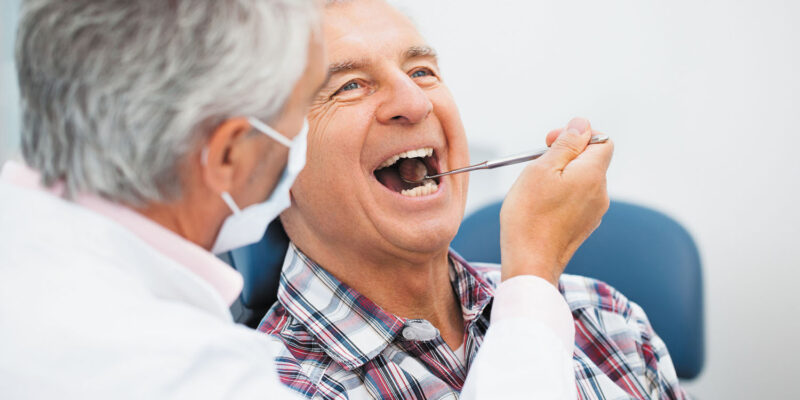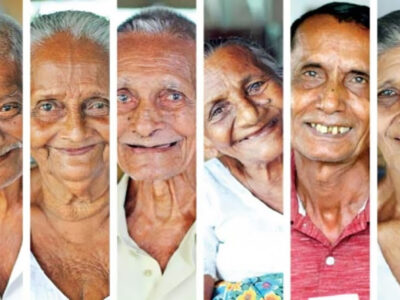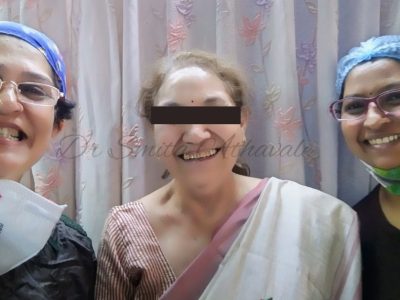Abstract
Poor oral health has a heavy impact on the overall well-being and quality of life in older adults. The objective of this article is to highlight the specific dental care needs of elderly patients. The key points covered will be the unique challenges faced by elderly patients when it comes to dental care; strategies for dentists to treat elderly patients with cognitive and physical limitations, as well as hearing and visual loss; and tackling medication errors in poly pharmacy.
The older demographic
A person aged 65 years or more is referred to as ‘an elderly’ person. Older adults are a growing patient demographic for dental practices. According to the National Health and Nutrition Examination Survey (NHANES) conducted in the US, around –
- 5% of older adults are edentulous
- 18% have untreated caries
- 68% have periodontitis.
Consideration of the overall clinical and oral health context of aging patients is important in order to provide optimum dental care.
Oral health of an aged person – The two main villains
- Xerostomia
Xerostomia affects 30% to 40% of elderly patients, primarily as an adverse effect of medication, although it can also result from diabetes, Alzheimer’s disease, or Parkinson’s disease. It is more likely to occur in those with an intake of more than 4 daily prescription medications (poly pharmacy). Dry mouth can lead to:
- mucositis
- caries
- cracked lips
- fissured tongue
- sore spots in a denture user
Dentist’s Recommendations: Individuals with dry mouth must be advised to
- include drinking or at least sipping regular water throughout the day
- include citrus fruits like lemons, sweet lime, oranges and grapefruit
- limit alcoholic beverages
- limit beverages high in sugar such as juices, sodas
- limit beverages high in caffeine, such as teas or coffee (especially sweetened)
- Root caries
Older adults are at increased risk for root caries because of increased gingival recession that exposes root surfaces. Approximately 50% of older persons have root caries affecting at least one tooth, while 10% are affected by secondary coronal caries.
Dentist’s Recommendations: Individuals with root caries must be advised to
- adopt good oral hygiene, which includes use of rotating/oscillating toothbrushes i.e electric toothbrushes
- use topical fluoride (i.e., daily mouth rinses, high fluoride toothpaste and regular fluoride varnish application)
- pay attention to dietary intake
Guidelines to treat a dental patient with cognitive limitations
Most elderly patients suffer from cognitive limitations. Cognitive limitations means having limited skills related to understanding, planning, decision-making, and coping. Patients with severe cognitive impairment like dementia, are at increased risk for caries, periodontitis and oral infection because of decreased ability to engage in home oral care. Communication during the dental appointment may be challenging when the older adult has cognitive impairments.
Guidelines for a dentist to treat elderly patients with cognitive limitations
- Minimise the number of people, distractions, and noise in the operatory when providing care to a patient with dementia, although a trusted caregiver in the room may provide reassurance to the patient.
- Patients should be approached from the front at eye level and use of nonverbal communication, such as smiling and eye contact, is important.
- The dentist should begin the conversation by introducing himself or herself.
- Since a patient with cognitive limitations may become overwhelmed by information easily, instructions should be simple and sentences short, such as, “Please open your mouth.”
- Since cognitive impairment or dementia can affect a patient’s ability to follow instructions following oral surgery, it is recommended that practitioners ensure local hemostasis (i.e., sutures, local hemostatics, socket preservation techniques) prior to dismissal.
- Educate the caregiver along with the patient.
- Dentate patients with cognitive limitations should be encouraged to brush their teeth two or more times daily; use of an electric or battery-operated toothbrush should be considered.
- In edentulous patients with removable prostheses, repeatedly specify that the prostheses should be removed, inspected, and cleaned before bed and returned to the mouth in the morning.
Guidelines to treat a dental patient with physical and sensory limitations
- Guidelines to treat dental patients with Hearing Loss:
Hearing impairment is an extremely common age related change. The ADA Practical Guide to Patients with Medical Conditions advises the following in communicating with patients with hearing loss and/or hearing aids:
- In patients who read lips, face the patient while speaking, speak clearly and naturally; and make sure your lips are visible (remove mask). Be at the same level as the patient.
- Gain the patient’s attention with a light touch or signal before beginning to speak. Be sure the patient is looking at you when you are speaking and avoid technical terms.
- Use written instructions and facial expressions.
- Inform the patient before starting to use dental equipment or when equipment is changed, resulting in an altered experience, e.g., vibrations from a low-speed versus a high-speed handpiece.
- In patients with hearing aids, minimize background noise when speaking. Avoid sudden noises and putting your hands close to the hearing aid(s). Patients may want to adjust or turn off the hearing aid(s) during treatment.
- Written and illustrated materials and websites can be used to help explain dental information, procedures, and postoperative instructions.
Dental care providers should speak slowly, clearly, and loudly when talking with older patients to enhance hearing and understanding. It is important to make sure that speaking loudly and slowly does not introduce a patronizing or condescending tone of voice.
- Guidelines to treat dental patients with Visual Loss: Age-related visual impairment, such as cataracts, glaucoma or presbyopia, can diminish a person’s ability to process nonverbal conversational cues that are communicated visually. The following strategies can assist visually impaired older adults in the dental office:
- Large-print magazines in the waiting room
- Good lighting throughout the office; add spot/task lighting in areas used for completing forms
- Large print on prescription bottles
- Install blinds or shades to reduce glare
- Use contrasting colors on door handles, towel racks, and stair markers
- Ensure the patient can clearly see demonstrations and read written materials, including appointment cards and instructions.
- Guidelines to treat dental patients with Physical Limitations/Loss of Mobility: Having a wheel-chair friendly practice and a staff member who can provide assistance in transferring the patient onto the dental chair is the first step towards treating such patients. Osteoarthritis or rheumatoid arthritis in the hand, fingers, elbow, shoulder, and/or neck can affect a person’s ability to maintain good quality home oral care. Here is what a dentist can advise such a patient:
- Modification of manual toothbrush handles (e.g., with Velcro® straps or attaching a bicycle handlebar grip)
- use of an electronic toothbrush with a wide, grippable handle can help accommodate for lost mobility
- Floss holders or interdental cleaners/brushes can aid in cleaning between teeth.
- Increasing the frequency of dental cleanings and examinations to promote optimal maintenance of oral hygiene.
Medication considerations – the frenemy called polypharmacy
According to data from NHANES, 90% of elderly patients take medication, while 39% of people reported using 5 or more prescription drugs (“polypharmacy”).
Drugs most commonly prescribed in elderly patients include:
- statins for hypercholesterolemia
- antihypertensive agents
- analgesics
- drugs for endocrine dysfunction, including thyroid and diabetes medications
- antiplatelet agents or anticoagulants
- drugs for respiratory conditions
- antidepressants
- antibiotics; and
- drugs for gastroesophageal reflux disease and acid reflux.
The most frequently taken OTC medications by older adults include
- analgesics
- laxatives
- vitamins and
- minerals
Guidelines for medication considerations in dentistry:
- Keep in mind the medication-related mechanisms implicated in xerostomia and salivary gland dysfunction in older adults.
A 2017 systematic review found that urologic medications used to manage urinary frequency and incontinence, antidepressants, antipsychotics, anxiolytics, and hypnotics, were significantly associated with xerostomia in older adults.
- Always elicit proper medical history, especially for polypharmacy. The high prevalence of polypharmacy among older adults may lead to inappropriate drug use, medication errors, drug interactions or adverse drug reactions.
- Since cardiovascular disease is common among older individuals, it has been suggested that the dose of epinephrine in anesthetics should be limited to a maximum of 0.04 mg.
- It is recommended that even without a history of overt cardiovascular disease, the use of epinephrine in older adult patients should be minimized because of the expected effect of aging on the heart.
- Always monitor blood pressure and heart rate when considering multiple administrations of epinephrine-containing local anesthetic in the older adult population.
- Opioid-containing medications such as hydrocodone, oxycodone, and acetaminophen with codeine, should be avoided in older individuals with a history of falls or fractures, as such patients show an exaggerated response to central nervous system drugs.
Conclusion
Maintaining good oral health in older adults is crucial for their overall well-being and quality of life. This article has highlighted the specific dental care needs of elderly patients and provided recommendations for dentists to address these needs. By addressing these unique challenges faced by elderly patients, dentists can help provide optimal dental care to the older demographic.
References
- Federal Interagency Forum on Aging-Related Statistics. Older Americans 2012: Key indicators of well-being. https://agingstats.gov/docs/PastReports/2012/OA2012.pdf. Accessed August 21, 2023.
- Public health and aging: retention of natural teeth among older adults–United States, 2002. MMWR Morb Mortal Wkly Rep 2003;52(50):1226-9
- National Institute of Dental and Craniofacial Research. Dental caries (tooth decay) in seniors (age 65 and over). National Institutes of Health. http://www.nidcr.nih.gov/DataStatistics/FindDataByTopic/DentalCaries/DentalCariesSeniors65older.htm. Accessed August 21, 2023.
- Eke PI, Dye BA, Wei L, et al. Update on Prevalence of Periodontitis in Adults in the United States: NHANES 2009 to 2012. J Periodontol 2015;86(5):611-22.
- Yellowitz JA, Schneiderman MT. Elder’s oral health crisis. J Evid Based Dent Pract 2014;14 Suppl:191-200.
- Razak PA, Richard KM, Thankachan RP, et al. Geriatric oral health: a review article. J Int Oral Health 2014;6(6):110-6.
- Preston AJ. Dental management of the elderly patient. Dent Update 2012;39(2):141-3.
- Stein P, Aalboe J. Dental care in the frail older adult: special considerations and recommendations. J Calif Dent Assoc 2015;43(7):363-8.
- Thompson LA, Chen H. Physiology of Aging of Older Adults: Systemic and Oral Health Considerations-2021 Update. Clin Geriatr Med 2023;39(2):225-34.
- Administration on Aging (AOA). A Profile of Older Americans (2014): Health and health care. U.S. Department of Health and Human Services Administration for Community Living. https://www.acl.gov/sites/default/files/Aging%20and%20Disability%20in%20America/2014-Profile.pdf. Accessed August 21, 2023.
- World Health Organization. Ageing and health (Fact Sheet No. 404). August 2022. https://www.who.int/en/news-room/fact-sheets/detail/ageing-and-health. Accessed August 21, 2023.
- World Health Organization. World report on ageing and health. September 2015. http://apps.who.int/iris/bitstream/10665/186463/1/9789240694811_eng.pdf?ua=1. Accessed August 21, 2023.
- Dodds C. Physiology of ageing. Anaesthesia & Intensive Care Medicine;7(12):456-58.
- Ouanounou A, Haas DA. Pharmacotherapy for the elderly dental patient. J Can Dent Assoc 2015;80:f18.
- Yellowitz JA. Geriatric health and functional issues. In: Patton LL, Glick M, editors. The ADA Practical Guide to Patients with Medical Conditions. 2nd ed. Hoboken, NJ: John Wiley & Sons, Inc.; 2016. p. 405-22.
- Kantor ED, Rehm CD, Haas JS, Chan AT, Giovannucci EL. Trends in prescription drug use among adults in the United States from 1999-2012. JAMA 2015;314(17):1818-31.
- Sherman JJ, Davis L, Daniels K. Addressing the Polypharmacy Conundrum. US Pharm. 2017; 42(6):HS14-20. https://www.uspharmacist.com/article/addressing-the-polypharmacy-conundrum. Accessed August 21, 2023.
- Fitzgerald J, Epstein JB, Donaldson M, et al. Outpatient medication use and implications for dental care: guidance for contemporary dental practice. J Can Dent Assoc 2015;81:f10.
- Radler DR. Dietary supplements: clinical implications for dentistry. J Am Dent Assoc 2008;139(4):451-5.
- Sreebny LM, Schwartz SS. A reference guide to drugs and dry mouth–2nd edition. Gerodontology 1997;14(1):33-47.
- Tan ECK, Lexomboon D, Sandborgh-Englund G, Haasum Y, Johnell K. Medications That Cause Dry Mouth As an Adverse Effect in Older People: A Systematic Review and Metaanalysis. J Am Geriatr Soc 2018;66(1):76-84.
- Bowie MW, Slattum PW. Pharmacodynamics in older adults: a review. Am J Geriatr Pharmacother 2007;5(3):263-303.
- American Geriatrics Society 2023 updated AGS Beers Criteria® for potentially inappropriate medication use in older adults. J Am Geriatr Soc 2023;71(7):2052-81.
















Comments